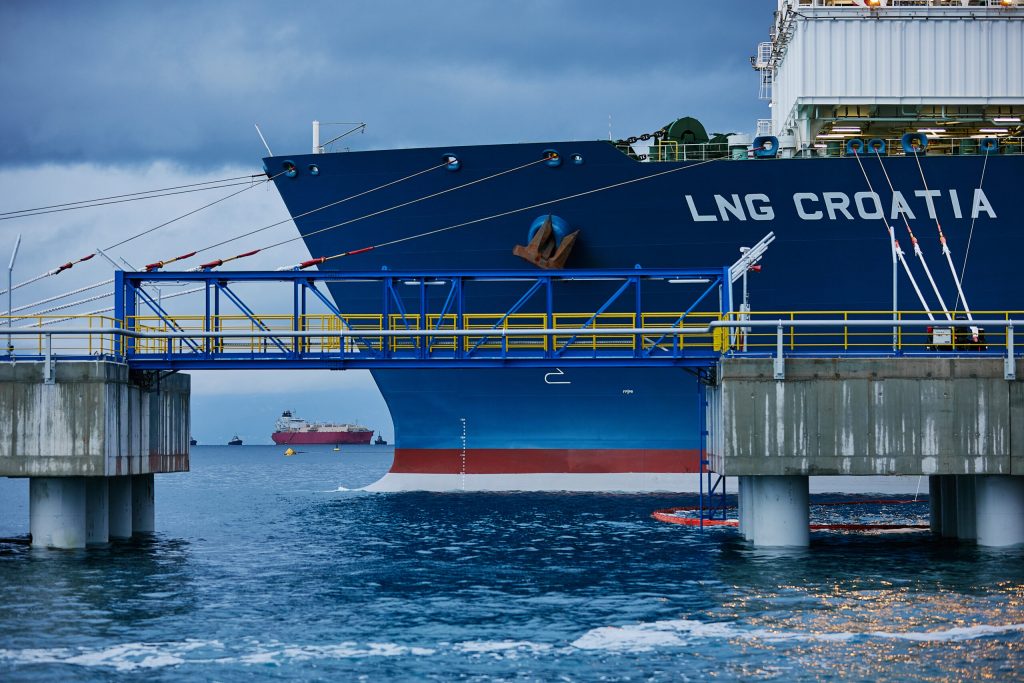NATURAL GAS
Natural gas is a fossil source of energy that formed deep below the earth’s surface. It contains a large number of different compounds. Methane, a compound with one carbon atom and four hydrogen atoms (CH4), has the largest share in the composition of natural gas. Natural gas contains also a smaller amounts of natural gas liquids (NGLs, which are also hydrocarbon gas liquids), and non-hydrocarbon gases, such as water vapor and carbon dioxide. Natural gas is used as an energy source, fuel and a raw material for the various production. It is used also in chemicals production.

How was natural gas formed?
Hundreds of million years ago and over long periods, the remains of plants and animals (like diatoms) were built up in thick layers on the surface of the earth and the ocean bottom, sometimes mixed with calcium carbonate, silt and sand. Over the years, these layers were backfilled with sand, silt and rocks. Heat and pressure changed part of this material rich in carbon and hydrogen into coal, part into oil, and part into natural gas.
Where can find we a natural gas?
In some places, natural gas has shifted into large cracks and the space between layers of rock. The natural gas found in such a formations is called conventional natural gas. Elsewhere, natural gas is found in tiny pores within some shale, sandstone, and other sedimentary rock formations. This natural gas is called shale gas or unconventional natural gas. Natural gas is also found dissolved in oil. This natural gas is called associated natural gas. Natural gas deposits are located onshore, offshore and deep under the ocean bottom.
Natural gas is the only source of energy that does not need energy transformation.

What is LNG?
Liquefied natural gas (LNG) is a natural gas that is converted to a liquid state by cooling to about -160 ° C. The volume of natural gas in the liquid state is about 600 times smaller than the volume in the gaseous state. The process of liquefaction, allows the transport of natural gas to places where natural gas pipelines cannot reach.
Where natural gas pipelines are not feasible or do not exist, liquefied natural gas is a way of supplying natural gas from production regions to consumption markets.
LNG liquefaction and export plants receive natural gas through pipelines and liquefy it for transport by special LNG ships or tankers. LNG is transported by tankers that have refrigerated (cryogenic) tanks. LNG is also transported in smaller tanks that can be placed on ships and trucks.
At import terminals (reception terminals for regasification), LNG is discharged from ships and stored in cryogenic tanks before being returned to the gaseous state (regasified). After regasification, natural gas is transported by gas pipelines to end customers – industry, gas power plants, and residential and commercial customers.
